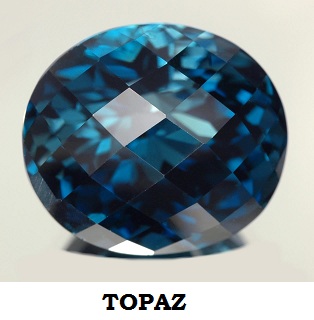|
|
Platypus Multi Project Reporting Engine
What is Platypus?
Platypus Multi Project Reporting Engine is a stand-alone Java
application that reads one or more project files created using
Microsoft Project(.mpp, .mppx) or Microsoft Excel (.xls, .xlsx)
and creates a set of reports to assist project managers,
program managers and project offices track and control project
implementation (Tactical Project Implementation methodology).
What types of reports does Platypus create?
Assuming that all the project plans are kept up to date
especially with regard to the % complete status for every task,
Platypus creates the following cross-project reports:
- Late Task Report:
-
This report identifies tasks within all the projects tracked
which were scheduled to have been completed already but are
still short of 100% done. The tasks are sorted by project and
then by due date.
- Work-in-Progress Report:
-
This report identifies all tasks within all the projects
tracked which have been started but not yet declared complete,
i.e. with % complete set to more than 0% but less than 100%.
The tasks are sorted by project and then by due date.
- Milestone Report:
-
This report gives the status of specific tasks within the
projects tracked with the same names as milestones defined
prior to running the report. This report is formatted as a
table with the rows representing the projects and the columns
representing the milestones. It gives an at-a-glance view of
project health very clearly and succinctly to the program
managers, project offices and senior management.
- Resource Allocation Report:
-
This report tracks resources across projects to identify
critical chains, available resources for new projects,
scheduling conflicts and potential bottlenecks due to
over-allocation. In this report, the resources are sorted by
name and then by project.
- Short-term Assignment Report:
-
This is the most important report because it facilitates the
philosophy behind Platypus, i.e. Tactical Project Implementation.
This report shows the status across all the projects tracked on
tasks due in three time periods – previous, current and next.
The time periods can be selected between daily, weekly and
monthly. The tasks are sorted by project, by period and then
by due date within the period.
What is the Tactical Project Implementation methodology?
General George Patton had said, "Good tactics can save even the
worst strategy. Bad tactics will destroy even the best strategy."
In military usage, as should be in everyday usage, strategy is
the overall plan or policy for obtaining the desired objective
or result. Tactics deal with the actual actions that realize the
strategy. However, many people today consider strategy as the
long-term plans and tactics as a short-term planning process.
Many managers spend significant time in planning projects but
still fail in implementation of the projects either due to
unrealism in the plan or a disconnect between planning and
execution.
Tactical Project Implementation is designed to a) improve the
realism in planning, and b) successfully implement the plan.
This is accomplished through a very strong focus on the current
- current objective, current milestone, current period of time
and current task. The strong current focus improves the
efficiency of implementing individual tasks, and when individual
tasks are implemented efficiently, the project as a whole cannot
but be successfully and efficiently implemented. The current
focus is also extended to the duration of the project -
long-term projects are divided into successive sub-projects such
that no single unit exceeds a reasonable time horizon, e.g.
three months. Success begets success, and when sub-objectives
are successfully attained, the project objective is reduced to
mere mechanics.
While the focus is on the current time period and objective,
the immediate future is also taken into account. A view to the
next time period allows future tasks to be prepared for, and, in
case of external dependencies, reminders to be sent out. Thus,
with current tasks efficiently implemented and next time period prepared for, timelines will be met and even exceeded.
Tactical Project Implementation also leverages resources
effectively using VKS Associates’ proprietary Blue Square /
Red Circle and Resource Alignment models. VKS Associates' other
innovative product TOPAZ (the Project Time Bank)
is also used to track resource efficiency and reward resources
with compensation time. These concepts are beyond the scope of
the current document.
For more information about Tactical Management and Tactical
Project Implementation methodology, please contact VKS Associates, LLC, through the contact page on the website
www.vksassociates.com.
How does Platypus facilitate Tactical Project Implementation (TPI)
A significant aspect of TPI is the “current focus.” Platypus
is designed to support “current focus” or the tendency to
concentrate on the immediate tasks. In order to do so, the
project team must:
-
Fix errors in the past. The “Late Task Report” and
the previous time period section of the “Short-term
Assignment Report” bring to the immediate attention the
tasks that were scheduled to be completed especially in the
most recent time period. This allows the project manager and
project team to understand what was not done and why, and
strive to fix this slippage.
-
Focus on the present. The “Work-in-progress Report”
and the current time period section of the “Short-term
Assignment Report” highlight tasks under way and tasks due
to be completed in the current period. This allows the
project manager and project team to meet expectations in a
timely manner.
-
Prepare for the future. The next time period section of the
“Short-term Assignment Report” gives a reminder of the tasks
due in the immediate future. This allows the project manager
and project team to prepare for what needs to be done and to
remind external groups that the project team depends upon.
In addition, the “Milestone Report” allows senior management
to compare projects on an equal basis, and the “Resource
Allocation Report” allows the organization to plan for future
projects and/or to handle staffing issues.
|
| Tools augmenting the services we provide |

|

|
|

